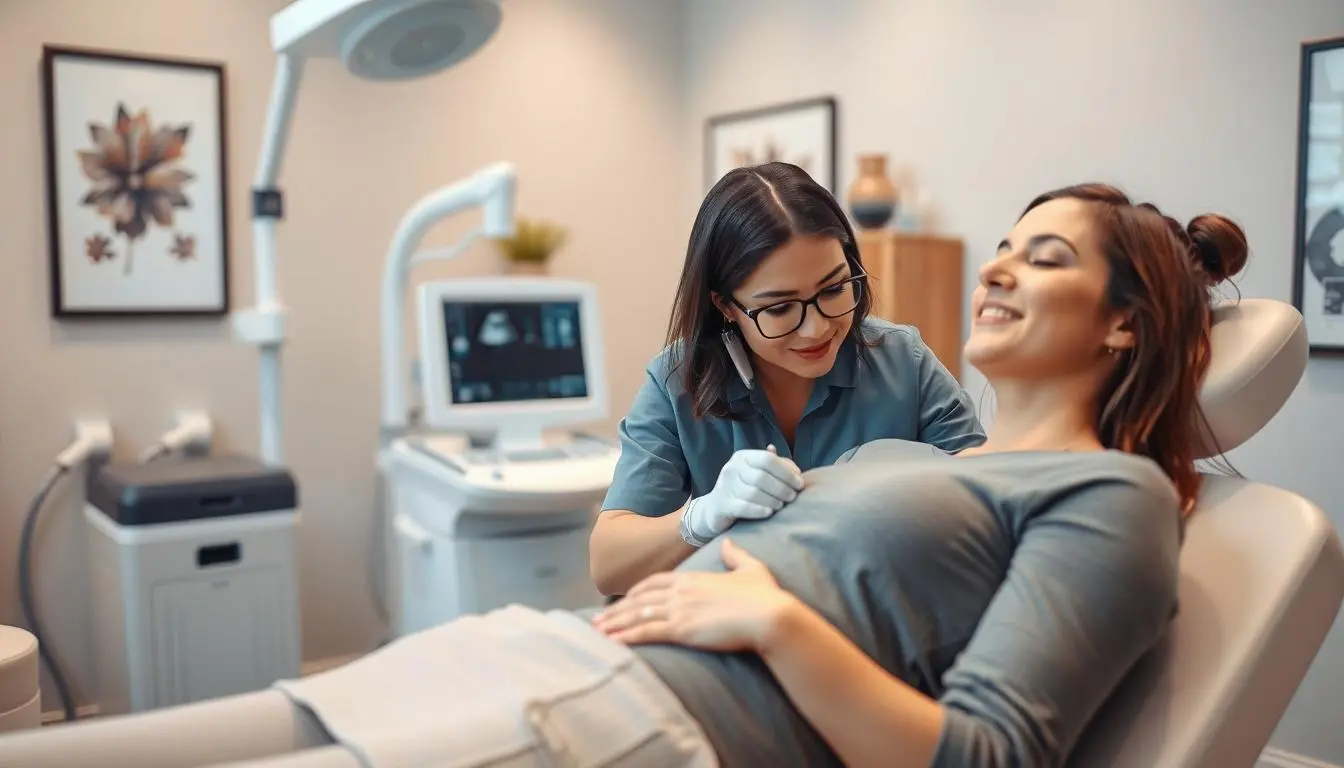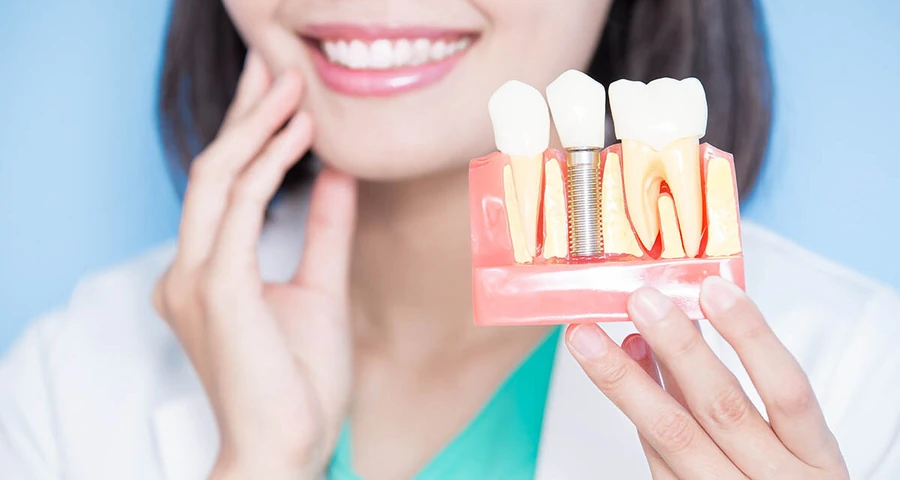You made it through the extraction — swollen cheeks, gauze pads, all of it. Now the worst is (hopefully) behind you… Except you’re still stuck sipping smoothies and spooning mashed potatoes like it’s day one. And somewhere between meal replacements and bland pudding, the question creeps in: When can I eat solid food after wisdom teeth removal — safely?
It’s a big one, and the answer isn’t as obvious as you’d think. Some people heal quickly. Others take their time. What matters is not just the when, but the how — how to reintroduce texture without causing pain, disrupting healing, or triggering dreaded setbacks like dry socket.
This guide breaks it all down: what’s happening inside your mouth as it heals, when solid food becomes a real option, which foods to skip, and what actual dentists say (not just what the internet guesses). Think of it as your no-fluff roadmap to eating like a real human again, without risking your recovery.
What Happens After Wisdom Teeth Removal?
Let’s start at the beginning. Once those wisdom teeth are out — whether it was a simple extraction or a more intense oral surgery — your mouth jumps into full repair mode. It’s like a little construction crew shows up, laying down blood clots to protect the wounds, reduce bleeding, and keep bacteria out. These clothes are the MVPs of your post-operative recovery.
Days 0 to 3 are the most critical. That’s when the blood clot formation kicks in and sets the stage for everything that comes after. If that clot gets dislodged? You might be dealing with dry socket, which is exactly as painful as it sounds (more on that in the next section).
Meanwhile, your gum tissue starts knitting itself back together, and deeper down, the jawbone begins slowly healing — a process that can take weeks. You’ll likely notice swelling, limited jaw movement, maybe a dull ache that flares up if you talk too much or try to chew something tricky. These are all normal symptoms during the first two weeks.
This healing stage is exactly why your dentist (or oral surgeon) probably told you to avoid hard or crunchy foods early on. Not because they hate you. But because it’s the only way to let those surgical sites settle in and rebuild.
1. Why You Shouldn’t Eat Solid Food Too Soon
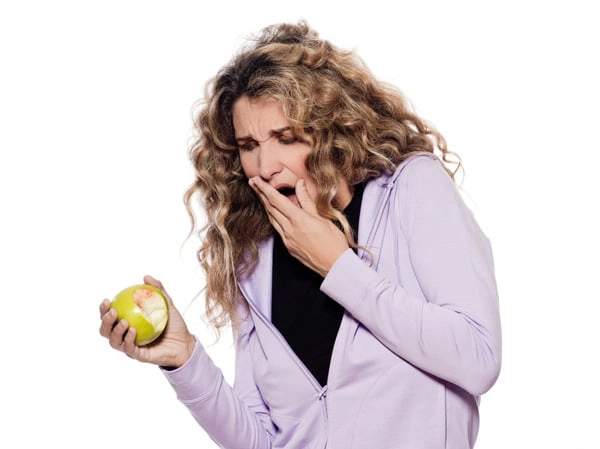
Alright — let’s talk about what can go wrong if you rush it.
First up: dry socket. It’s one of the most common and dreaded complications after wisdom teeth removal, especially if you start chewing solid food too soon. Basically, it happens when the blood clot protecting your socket gets dislodged or dissolves too early, exposing sensitive nerves and bone underneath. The result? Sharp, throbbing pain that doesn’t go away, no matter how many analgesic properties your meds promise.
Solid or sharp-edged foods can easily irritate the area, poke into healing gums, or create suction (especially if you’re chewing enthusiastically). Even crunchy foods like toast or chips can act like tiny bulldozers, tearing at your surgical extraction site when what it needs is rest.
There’s also the risk of introducing bacteria, especially if tiny bits of food sneak into the socket and stay there. That’s where emergency dental care might enter the picture, and trust me, no one wants to go back to the dentist because of a crouton.
Stick to saline water rinses and soft, non-irritating foods for now. Your jaw (and nerves) will thank you later.
2. What Dentists Recommend: When Can I Eat Solid Food?
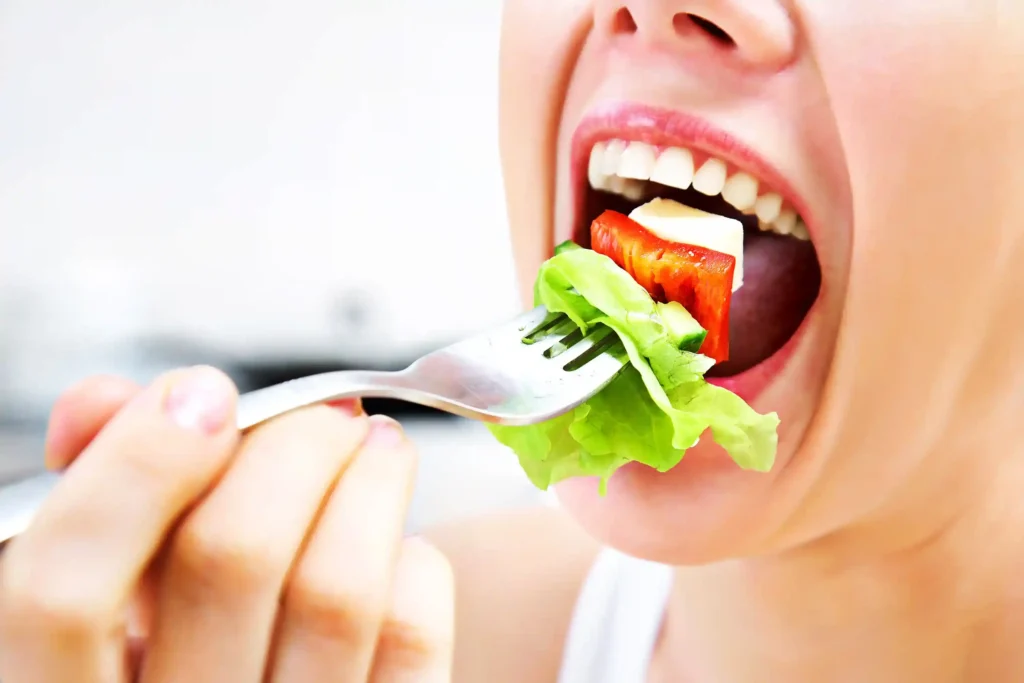
When can I eat solid food after wisdom teeth removal — really?
Most dental professionals will tell you that the average window to safely reintroduce solid foods is between 7 to 14 days after your oral surgery. But (and this is a big but), that’s just a general range. Your actual timeline depends on a bunch of things:
- How complex your tooth extraction was
- Whether it was a surgical extraction or just a simple one
- Your age and overall health
- How well you’ve followed your post-operative instructions
- Whether your body tends to heal quickly or takes its sweet time
Let’s say you had all four wisdom teeth out, impacted, and needed dental sedation. You might want to wait the full two weeks — maybe longer — before taking that crunchy first bite. On the other hand, if it was a quick, clean extraction on one side only? You might ease into solids after 7 days without issue.
🗣 Pro Tip: Don’t rely just on a calendar. Listen to your body. If chewing still feels uncomfortable, if your gums bleed, or if there’s tenderness near the surgical sites, press pause. A gentle call to your oral surgeon or even a quick follow-up visit could save you from complications later.
3. 5-Stage Food Timeline After Wisdom Teeth Removal
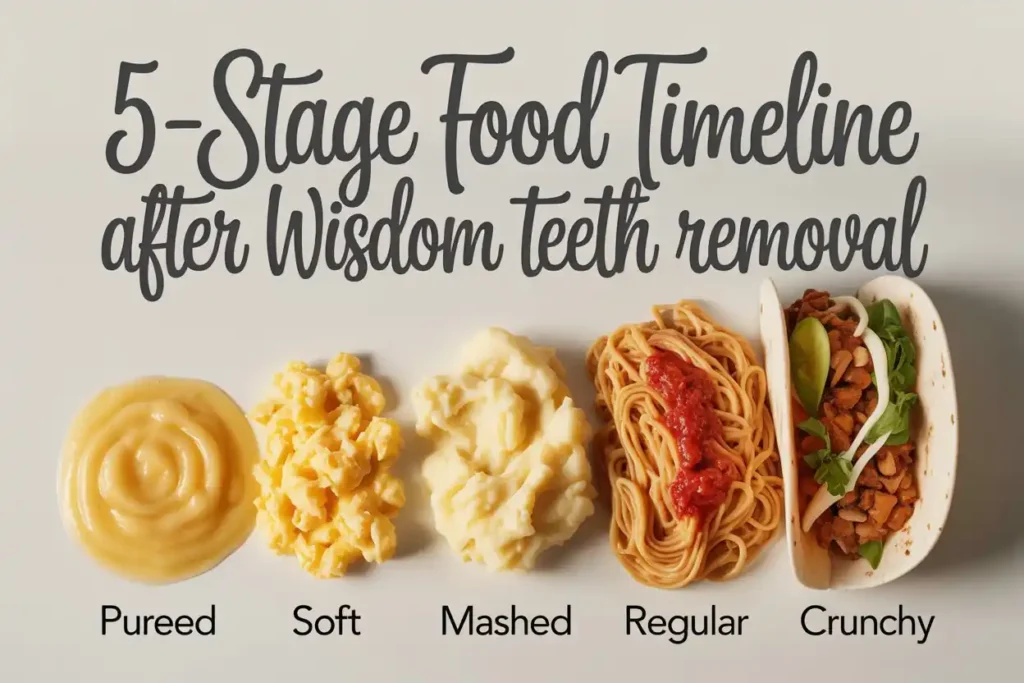
Here’s the part most people are looking for — a clear, realistic breakdown of what to eat and when. Your recovery process isn’t just about waiting; it’s about actively supporting healing through the right foods at the right time. Here’s a table to make that easier
| Day Range | Food Type | Examples | Why It Works |
| Day 1–2 | Clear liquids only | Bone broth, electrolyte water, herbal tea (no caffeine), apple juice | Prevents dislodging blood clots, keeps you hydrated |
| Day 3–4 | Very soft foods | Mashed potatoes, pudding, cottage cheese, applesauce, protein shakes | Easy to swallow without chewing; good for post-surgical care |
| Day 5–7 | Semi-solid, mushy foods | Oatmeal, well-cooked pasta, overcooked rice, scrambled eggs | Adds nutritional value without harming healing tissue |
| Day 8–14 | Soft solids | Steamed veggies, soft pancakes, tender chicken, cooked noodles | Begin chewing — gently. Avoid chewy or spicy items |
| After Day 14 | Return to normal slowly | Toast, meat, crunchy foods (if pain-free) | Monitor for discomfort. Stop if anything feels “off” |
Notes:
- Avoid dairy products in the first couple of days if you’re on narcotic pain medicine — they can upset your stomach.
- A soft-food diet isn’t glamorous, but it gives your oral and maxillofacial physicians what they need to work with: a stable, clean healing site.
- Skip caffeinated beverages during the first 48 hours — they can interfere with blood clotting and blood flow.
🧂 Saltwater rinses or a saline rinse after every meal will help keep food particles from hiding in the healing sockets. Just don’t swish hard — be gentle.
4. Signs You’re Ready to Eat Solid Food
So you’ve been diligent — sticking to the liquids, slowly transitioning through soft textures, following your post-operative care guide like a champ. But still, the question lingers: how do you know you’re ready to eat solid food again?
Well, there’s no exact switch that flips. It’s more like a mix of quiet signs your body starts giving you — and a little trust in your gut (and gums). Here’s what to look for:
✅ Key Indicators That It Might Be Time:
- No bleeding when you rinse or eat — not even a little pink in your spit
- Jaw movement feels smooth — no sharp pinches or tightness when you open wide
- You can chew without tenderness, especially near the surgical sites
- You’ve been off narcotic pain medicine and are managing fine with just OTC options or nothing at all
- Your dental professional gave the green light at a follow-up
Some people jump ahead because they’re just over it — we get it. But ignoring these signs (or the absence of them) might set you back days or even weeks. Especially if you disturb the blood clot formation or irritate nerves still settling in.
🗣 Pro Tip: Try biting into something like soft bread. If you feel a deep ache or tenderness right away — stop. That’s your jaw saying “not yet.” Don’t push through pain. Unlike gym workouts, there’s no gain here from grinding through discomfort.
5. The Best First Solid Foods to Try
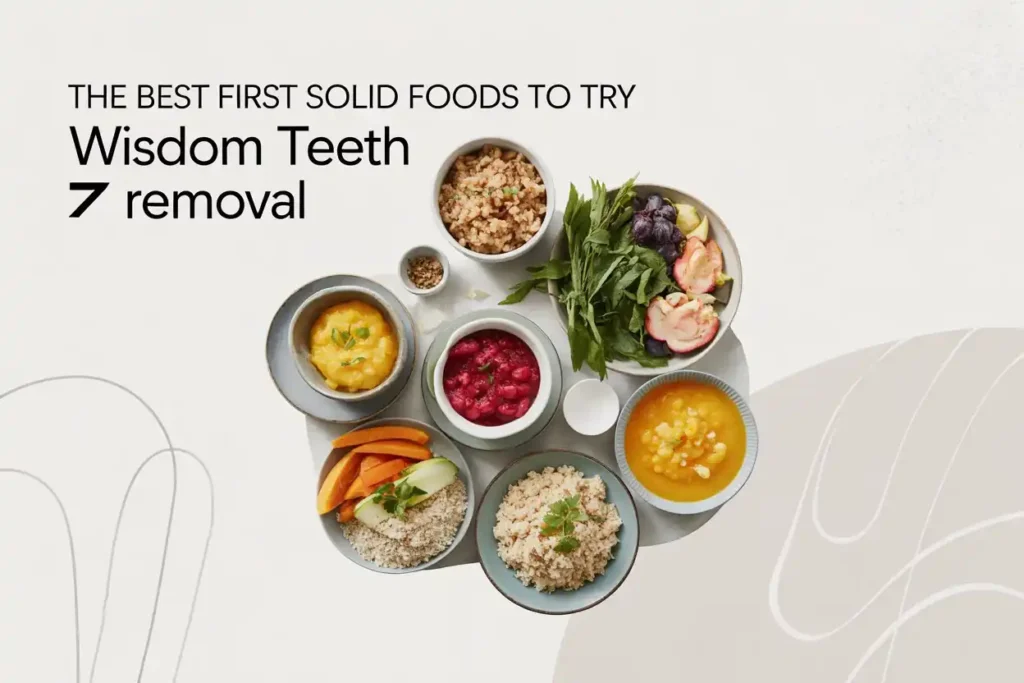
Once you feel confident, it’s time to dip your toe (or your teeth) back into the world of solid food. But don’t go straight for steak or crusty baguettes. You want items that are soft, forgiving, and won’t mess with your oral hygiene routine.
Here’s a shortlist of solid foods that work well during this transition phase:
🥣 Starter Solids to Try:
- Well-cooked rice bowls — Think sticky or slightly overcooked rice, not al dente
- Flaky fish or tender chicken breast — Steamed or slow-cooked, nothing grilled or seared
- Mac & cheese — Soft noodles with creamy (not spicy) sauce
- Steamed vegetables — Carrots, zucchini, squash — cut small and easy to chew
- Soft pancakes or French toast — Avoid crusts and toppings with seeds or crunch
These options offer nutritional value and are easy to manage without chewing too aggressively. They also minimize the risk of dislodging blood clots, especially if you eat slowly and avoid the surgical side.
🍵 Bonus Option: Add a warm (not hot!) herbal tea rinse after meals to soothe any lingering tenderness. Just don’t swish. Think of it more like a gentle warm bath for your gums, not a power washer.
Also worth noting: these foods support oral administration of nutrition, meaning they deliver what your body needs without complicating your healing process. The less trauma to your gums, the faster your full recovery diet can begin.
6. Solid Foods You Should Still Avoid

So maybe you’re feeling good. No pain, no swelling — and you’re ready to crunch into something… anything. But hold up.
There’s a category of foods that can still cause problems, even after the two-week mark. And the worst part? You might not feel the consequences right away. Some complications show up a day or two later, like swelling, bleeding, or even signs of a dry socket returning.
Here’s what to avoid (for now):
🚫 Steer Clear of These Until Fully Healed:
- Popcorn, nuts, seeds – Tiny sharp bits can get trapped in the healing site
- Chips, crackers, hard toast – Break into shards that jab the surgical extraction area
- Sticky or chewy candies – They pull on gum tissue and can loosen stitches
- Spicy sauces and acidic fruits – Can irritate raw tissue and delay post-surgical care
- Carbonated or caffeinated beverages – Not great for blood clot dislodgment or hydration
Even after oral and maxillofacial physicians clear you for solid foods, these types of foods should still be reintroduced slowly — if at all — during the first few weeks.
🗣 Pro Tip: Just because it’s soft doesn’t mean it’s safe. White bread might seem harmless, but it can gum up in your mouth and lodge near healing areas, especially if you’re not rinsing regularly with saltwater rinses or using your irrigating syringe properly.
7. Eating With Stitches vs. Without Stitches
Here’s a wrinkle that often gets overlooked: Are you healing with Wisdom Teeth stitches — or not? It matters. Because eating with sutures (especially dissolvable ones) brings its own set of challenges.
Most modern oral surgery practices — like those at Springhill Dental Center or Greater Modesto Dental Implant & Oral Surgery Center — use stitches that dissolve on their own within 5–10 days. But that doesn’t mean they’re invincible.
Here’s what you need to know
| Stitches Type | Eating Guidelines | Risk Level |
| Dissolvable | Stick to soft foods until they start disappearing; rinse gently | Moderate – food can tug on healing tissue |
| Non-Dissolvable | Avoid any solid food until stitches are professionally removed | Higher pulling can lead to re-suturing |
| No stitches | Healing is more exposed; be extra cautious with chewing | Moderate to High – easier to irritate |
If you had dental sedation, you might not even remember if you got stitches, which is why following your post-operative instructions is crucial. Or call your oral surgeon (even days later) and just ask. They’ll appreciate your caution.
🧠 A common myth: once stitches dissolve, you’re all good to eat anything. Not quite. The tissue may look closed, but the deeper layers are still vulnerable for several more days, especially if you had jaw surgery or a more complex dental procedure.
8. When Only One Side Was Treated

Sometimes, not all four wisdom teeth get removed at once. Maybe just the bottom ones. Or only the top left. Whatever the case, chewing on one side while protecting the healing site on the other becomes your new reality — at least for a little while.
It sounds simple enough, right? Just use the “good” side. But it’s easier said than done.
Here’s how to avoid unwanted complications while still getting some nutritional value in:
🦷 Tips for One-Sided Chewing:
- Cut food into small, bite-sized pieces — Smaller pieces = less risk of accidental contact with the healing side
- Tilt your head slightly when chewing — Gravity helps keep food away from the surgical extraction area
- Use an irrigating syringe or gentle rinse after every meal to clean the healing side
- Stick to foods that don’t require much side-to-side jaw movement — think soft rice, pancakes, or tender fish
Some people also find that chewing on one side for too long leads to jaw soreness or muscle fatigue. If that happens, pause. Switch to liquid or soft foods for a meal or two and use an ice pack to calm the strain.
🧠 Just remember: patient safety during this time isn’t just about avoiding pain — it’s about preventing small things from becoming big problems.
9. Tips to Speed Up Your Recovery and Return to Normal Eating

Let’s face it: eating mushy food for too long can wear you down. How can you speed up your healing process — without compromising your recovery?
Here’s a quick cheat sheet to keep your post-operative recovery on the fast track:
💡 Recovery Fast-Track List:
- ✅ Hydrate like it’s your job — Water, herbal teas, diluted juice (no caffeinated beverages)
- ✅ Cold compress for the first 24–48 hours, then switch to warm if needed
- ✅ Use saline rinse or warm saltwater rinses after meals to keep sockets clean
- ✅ Avoid smoking, alcohol, and sucking through straws — all of which can cause blood clot dislodgement
- ✅ Gently brush your teeth and tongue, avoiding the surgical sites
- ✅ Stay on top of your oral hygiene — even light food buildup can cause issues
And finally, follow every single one of your post-operative instructions, even the ones that seem a bit overcautious. Your oral surgeon, whether they’re from Manchester Oral Surgery or Dr. Byron Scott’s team, isn’t just being dramatic. They’re helping prevent setbacks that could stretch your recovery from two weeks into a month or more.
Also Read For More Information: Does Pineapple Juice Help With Wisdom Teeth or Not?
🗣 Pro Tip: Keep a small journal or recovery tracker. Note what you ate, how it felt, and any swelling or tenderness. Over time, you’ll spot patterns, and it makes it easier to explain things clearly if you need to call your dental professional.
10. What If You Accidentally Ate Solid Food Too Soon?
Let’s say you caved. You took a bite of pizza or toast a few days after surgery, before your dental professional said it was safe. First: don’t panic.
Honestly, it happens more often than you’d think. You’re not the first person to forget (or ignore) their post-operative instructions, especially when hunger or boredom kicks in. But now that it’s done, here’s what to do next.
🛠 If You Ate Solid Food Too Soon:
- Stop chewing immediately if you feel sharp pain, stinging, or bleeding
- Gently rinse with warm saline water (or a herbal tea rinse) to clean out the area
- Check for dislodged blood clots — if the socket feels exposed or throbbing, call your dentist
- Use an ice pack if swelling flares back up
- Avoid further irritation — go back to liquids or soft foods for 24–48 hours
Signs that things may not be okay include a deep aching pain that gets worse, bad breath that doesn’t improve with rinsing, or visible bone in the socket — all indicators of dry socket.
🗣 Pro Tip: Even if you feel fine, give your oral surgery clinic a quick call — whether that’s West Allen Dental or Prime Dental — and ask for guidance. They might tell you everything’s fine… or they might catch something you wouldn’t notice yourself.
The sooner you respond, the less likely it is you’ll need emergency dental care or a return visit.
11. Real Dentists Weigh In

You’ve read a lot of tips by now, but what are real professionals actually saying when asked, “When can I eat solid food after wisdom teeth removal?” Turns out, the consensus is pretty consistent… with a few personalized twists.
Here’s what we found when looking into reputable practices and oral and maxillofacial physicians across the board:
🦷 What the Pros Say:
- Dr. Byron Scott of Manchester Oral Surgery:
“Patients often think they’re in the clear once pain fades, but true healing takes time. Start reintroducing solids slowly — nothing crunchy before Day 10 unless we say so.” - Dr. Amin Samadian at Springhill Dental Center:
“Healing looks different for everyone. Pay attention to your specific symptoms — not someone else’s timeline.” - Blue Gum Dental recommends using a staged food plan:
“Stick to liquids and soft foods in the first week. From Day 7 onward, evaluate chewing comfort daily.” - Indigo Dental emphasizes oral hygiene:
“Brushing teeth is still crucial — just avoid the extraction area. And never skip saltwater rinses.” - Prime Dental reminds patients of patient safety:
“When in doubt, avoid chewing near the surgical site. Chew the opposite side only until cleared.”
Each of these clinics sees hundreds of tooth extraction cases every year — from simple to complex jaw surgery situations. Their advice is rooted in real-world outcomes, not just printed pamphlets.
🗣 Side Note: During this research, one hygienist casually mentioned a patient who swore by lukewarm miso soup and overcooked noodles for the first 10 days — not exactly medical advice, but hey, whatever works and keeps you off crunchy tacos.
12. Global Healing Traditions and Meals

Not everyone reaches for mashed potatoes and Jell-O after wisdom teeth removal. Around the world, people lean into their soft-food diets with rich flavor and cultural comfort. And honestly, it’s kind of refreshing — because let’s face it, plain applesauce gets old fast.
If you’re looking for gentle but flavorful alternatives during your post-surgical care, here’s a look at how different regions nourish their healing mouths:
🌍 Recovery Meals From Around the World
| Region | Comfort Food | Why It Works |
| East Asia | Congee (rice porridge), miso soup, soft tofu | High nutritional value, warm, easy to swallow, soothing on the gums |
| Latin America | Blended soups, black bean purée, soft tamales without skins | Soft texture, packed with protein and healthy fats |
| Mediterranean | Greek yogurt, soft rice pilaf, hummus with soft pita | Great for digestion, easy on healing sites, rich in vitamins |
| South Asia | Khichdi (rice and lentil mush), soft paneer, warm milk with turmeric | Anti-inflammatory properties, warm comfort, ideal for oral administration of nutrients |
| Middle East | Lentil soup, mashed eggplant, labneh | Smooth texture, healing herbs, naturally low-irritant |
🗣 Pro Tip: Take a global approach to recovery. If you’re burned out on Western “soft food” staples, borrow a page from another culture’s healing playbook. Just skip anything spicy or acidic during the early days — your surgical sites will thank you.
These international meals are a gentle, flavorful way to reintroduce solids — and avoid falling into a boring food rut.
Conclusion
When can I eat solid food after wisdom teeth removal? The answer is… it depends. On your body, your oral surgery, your recovery process, and honestly, how well you follow the little things. Like rinsing gently. Like not sneaking chips on Day 4. Like actually taking your dentist’s advice, even if it sounds a little overcautious.
Most people can start reintroducing solid food around Day 7 to Day 14, but that doesn’t mean it’s a green light for everything. Healing happens in layers — what feels fine on the surface might still be tender underneath. And that’s where patience matters most.
If there’s one thing to remember, it’s not just about what you eat, but how. Slow down. Chew gently. Rinse after every bite if you have to. Ask your dental professional questions — even the ones that feel a little silly.
🧠 It’s okay if your healing isn’t picture-perfect. Maybe you tried the food too soon. Maybe you forgot a saltwater rinse. It happens. Recovery isn’t a straight line. But every smart choice you make — from sticking with your soft-food diet to skipping spicy takeout — adds up to one thing: getting back to normal safely, with no complications like dry socket or infection dragging things out.
Frequently Asked Questions
1. When can I eat rice after wisdom teeth removal?
Usually around Day 5–7, if it’s soft and overcooked. Don’t go for fried or crunchy rice just yet — think more like risotto or sticky rice.
2. Can I eat meat 7 days after surgery?
If it’s tender and shredded (like slow-cooked chicken or flaky fish), yes — just chew on the opposite side. Avoid steak or anything chewy for now.
3. What foods are still unsafe after 2 weeks?
Chips, popcorn, crusty bread, and anything that breaks into sharp bits. Even after 14 days, your dental health issues can flare up if you’re not careful.
4. Will eating early cause infection or dry socket?
It can. If you disturb the blood clot formation, bacteria can sneak in — which may lead to dry socket or even an infection that requires emergency dental care.
5. Is cottage cheese okay after wisdom teeth surgery?
Yes! It’s a great soft-food diet option — smooth, cool, full of protein. Just rinse afterward to avoid buildup.
6. What’s the best drink for healing after oral surgery?
Water. Herbal teas (caffeine-free). Bone broth. Avoid caffeinated beverages and alcoh
7. How long do dissolvable stitches take to disappear?
Anywhere from 5 to 10 days. Still, avoid tugging food or brushing near them — even if they look like they’re gone.
8. What if I accidentally swallowed food into the socket?
Don’t panic. Rinse with saline water or your prescribed rinse. Use an irrigating syringe gently. If pain or swelling follows, call your oral surgeon.
9. Can I brush my teeth normally after surgery?
Yes, but carefully. Use a soft toothbrush, avoid the extraction sites, and don’t forget your tongue. Maintaining oral hygiene helps prevent infection.
10. Do I need to see my dentist again if everything feels fine?
Yes, usually for a check-up. Your healing may feel complete, but a dental professional can spot issues you can’t see, especially under the gumline.


